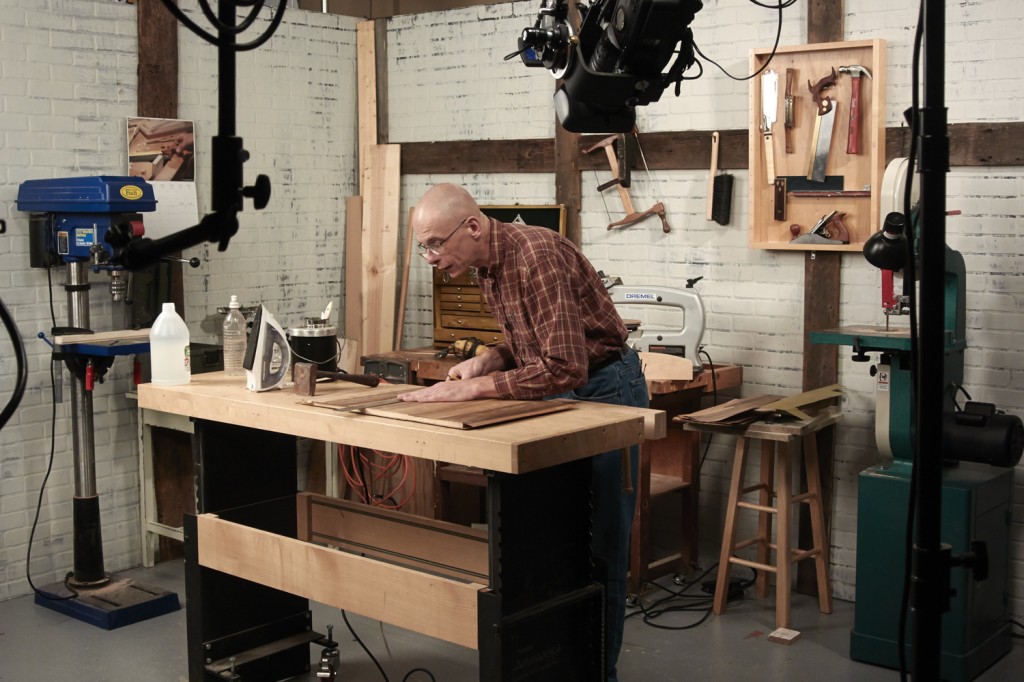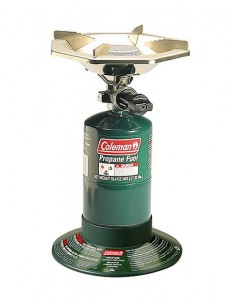We may receive a commission when you use our affiliate links. However, this does not impact our recommendations.
One the greatest aspects of woodworking is that there are always new things to learn. When I began building furniture, I set my sights on a few complex projects which I figured I could build when I had gained experience. The closer I got to building those pieces, the more I knew how much I didn’t know about woodworking. You can learn something new every day.
 Case in point: On Sunday at Woodworking in America, my session was on inlay – stringing, banding and pictorial – used to help identify from what region or city a piece of furniture was made. The following week, Rob Millard – a big-time Federal furniture builder – was in the studio here at F+W shooting a video about inlay, including banding and pictorial work. It’s expected release date is mid-March 2014. His “Make an Inlaid Gallery Table with Rob Millard” DVD is a project build, but this DVD focuses strictly on technique.
Case in point: On Sunday at Woodworking in America, my session was on inlay – stringing, banding and pictorial – used to help identify from what region or city a piece of furniture was made. The following week, Rob Millard – a big-time Federal furniture builder – was in the studio here at F+W shooting a video about inlay, including banding and pictorial work. It’s expected release date is mid-March 2014. His “Make an Inlaid Gallery Table with Rob Millard” DVD is a project build, but this DVD focuses strictly on technique.
 During his shoot, I ditched my magazine assignments for a short while to peek inside the video studio. As I did, I see this contraption sitting on the bench. As I move closer I see it’s a camp stove on top of which sits a small cast iron frying pan and Rob’s shading sand. A camp stove? Really? Then I watched as Rob shaded a few pieces. He simply waved them through the sand, through the smoking-hot sand. (Always wanted an excuse to use that phrase, but in a completely different context.) His inlay edges darkened right now, and the amount of control he had using the hot sand was amazing.
During his shoot, I ditched my magazine assignments for a short while to peek inside the video studio. As I did, I see this contraption sitting on the bench. As I move closer I see it’s a camp stove on top of which sits a small cast iron frying pan and Rob’s shading sand. A camp stove? Really? Then I watched as Rob shaded a few pieces. He simply waved them through the sand, through the smoking-hot sand. (Always wanted an excuse to use that phrase, but in a completely different context.) His inlay edges darkened right now, and the amount of control he had using the hot sand was amazing.
I immediately switched from astonishment to desire. Goodbye electric burner that takes forever to get hot, and even then takes longer to shade my veneer than it takes to handplane the lumber for a chest of drawers. I’m not waiting. I want a camp stove today. I know these are available many places, so it’s just a matter of time before I’m basking in the glow.
If inlay and sand shading are on your list of woodworking skills to develop, buy the better heat source. Get a camp stove.
Here are some supplies and tools we find essential in our everyday work around the shop. We may receive a commission from sales referred by our links; however, we have carefully selected these products for their usefulness and quality.









I could be wrong, but I would think those would not be rated for indoor use. Of course it may be that on low enough, with adequate ventilation it’s probably safe enough, but I’d exercise caution. No sense in getting CO poisoning due to a desire to heat up your sand better.
Don’t mean to sound like a lawyer, but safety first!
Love it!
Looking forward to Rob’s DVD